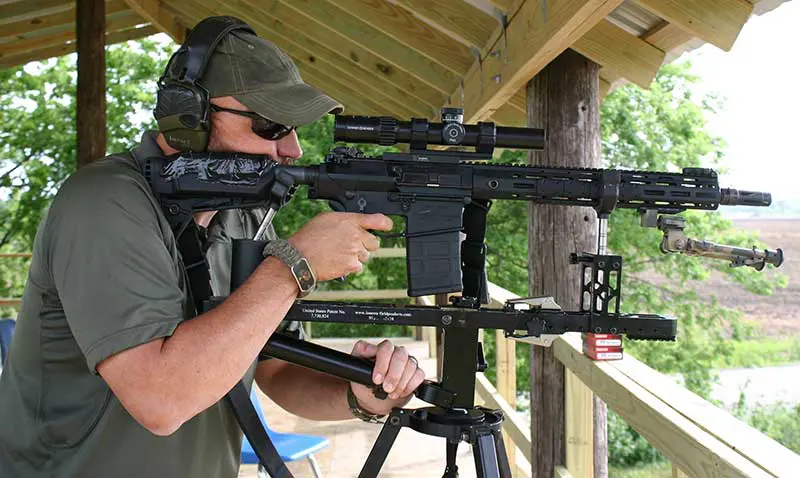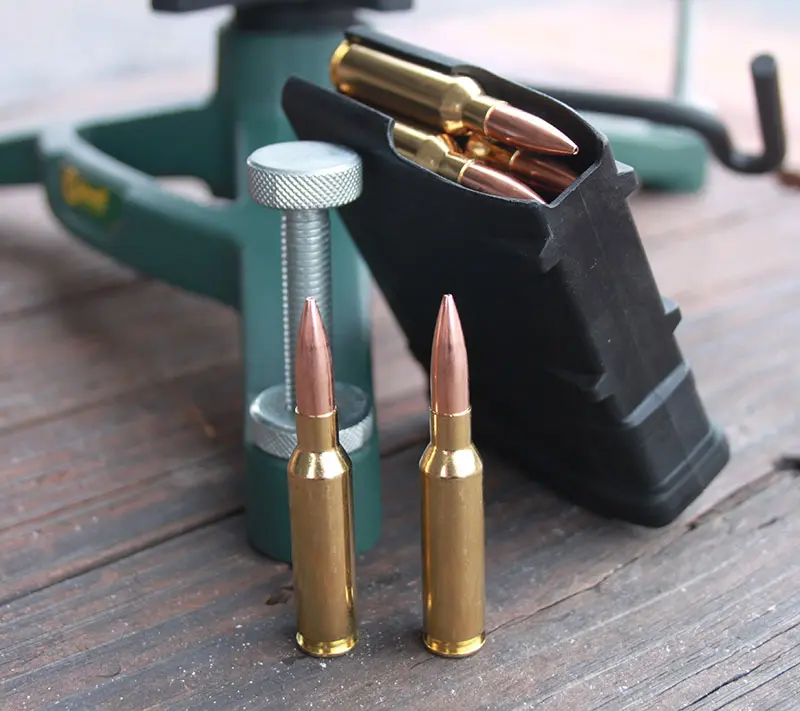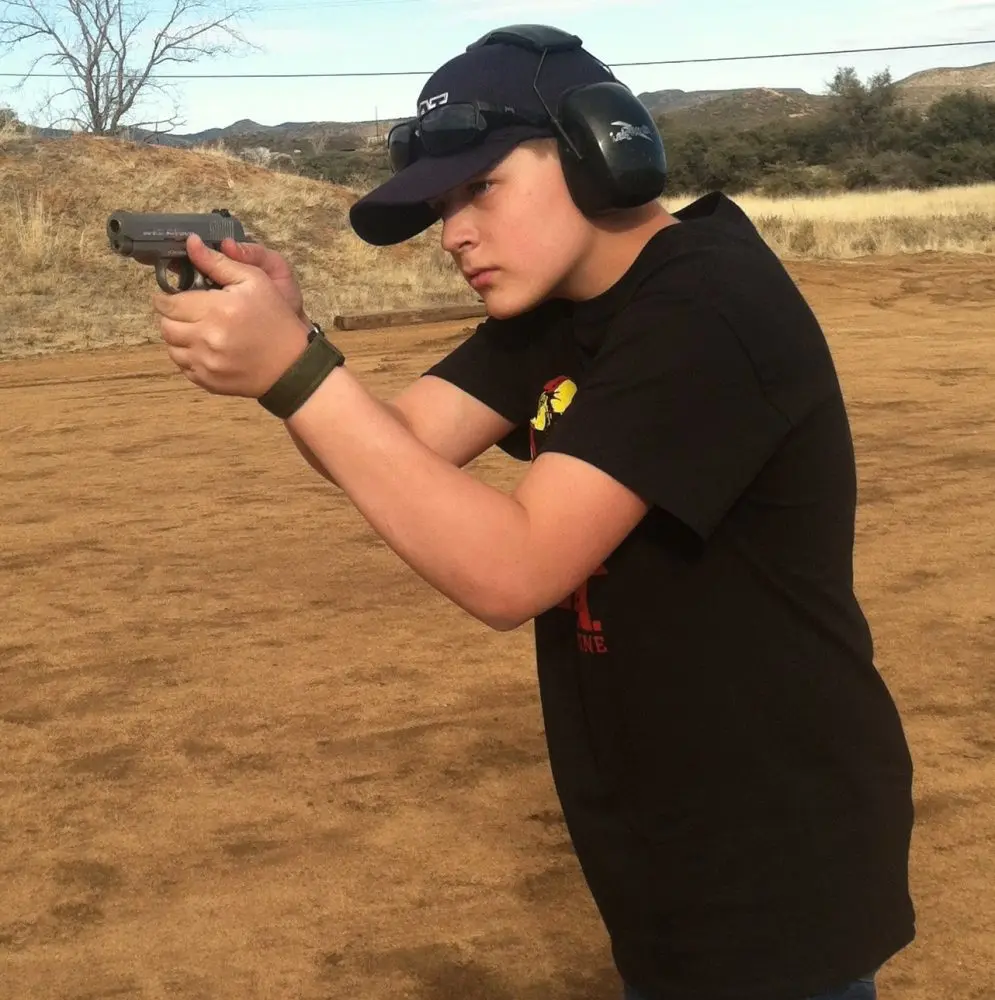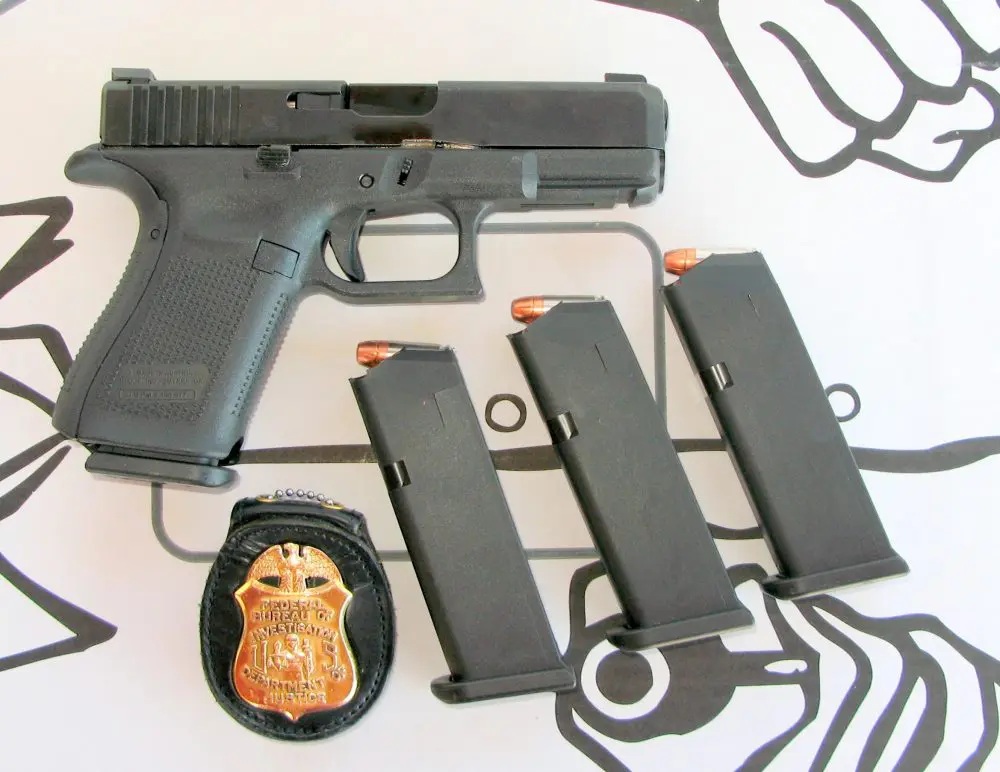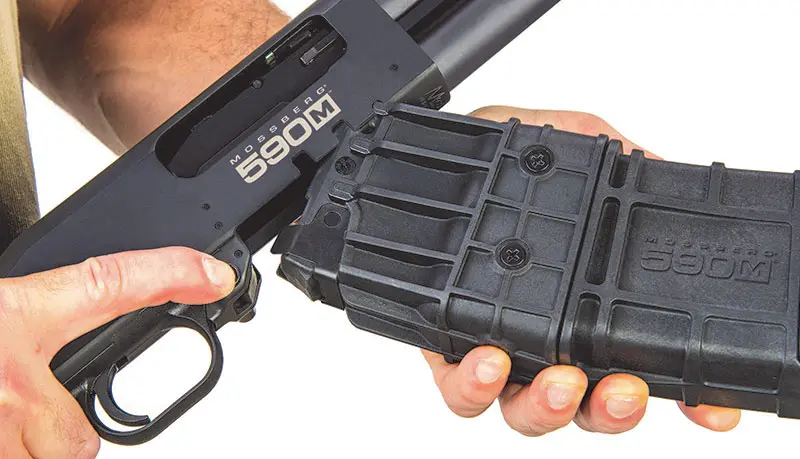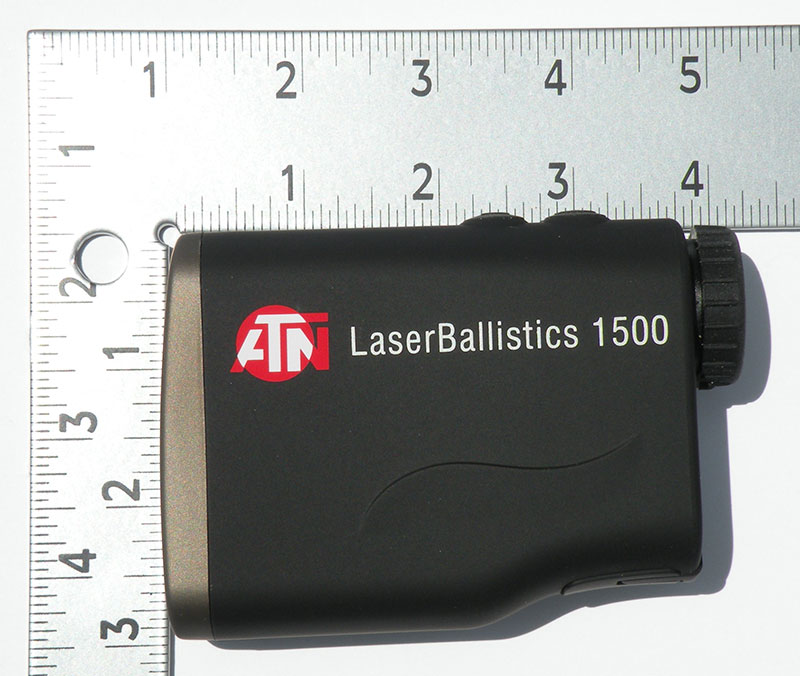
I’ve been fascinated with laser rangefinders since the first work I did with one back in 1969 when I was in the Marine Corps. That was a laser pulse-firing device that was one component of an Integrated Observation Device (IOD), which also incorporated a 10-20X80mm set of ship’s binoculars and a 10X Starlight night-vision device, with all three set side-by-side on a large tripod. At the time, the IOD was a top-secret unit we were evaluating for artillery Fire Direction Control work. Our contingent, radio call sign “Spyglass Alpha,” was sequestered on a tiny Forward Observation Post very near the Laotian border, and the IOD proved to be a very deadly piece of equipment.
The laser rangefinder on the IOD was relatively huge and heavy. If I remember correctly, it weighed 25 to 30 pounds and was about 10 inches wide, 14 inches high, and over two feet long. We speculated as to how long it would take before it was downsized and integrated with a pair of binoculars.
I don’t know when it was first developed, but 30 years later, in 1999, I was at an Invitational Sniper’s Match in Gillette, Wyoming and one of the young Force Recon Marines from their team pulled me aside and, after swearing me to secrecy, showed me just such a device.
This rangefinder was paired with a large set of Leica binoculars, and it also had an altimeter, level, GPS, and an electronic compass in the mix. You could jack it in to a radio and transmit your co-ordinate position, elevation, front and back azimuth to the target, angle of declination from the level, and of course, the exact distance to the target. With that information, the Fire Direction Control computer could calculate the target position and deliver a Fire Control Data solution to the artillery.
Table of Contents
LASERBALLISTICS RANGEFINDER
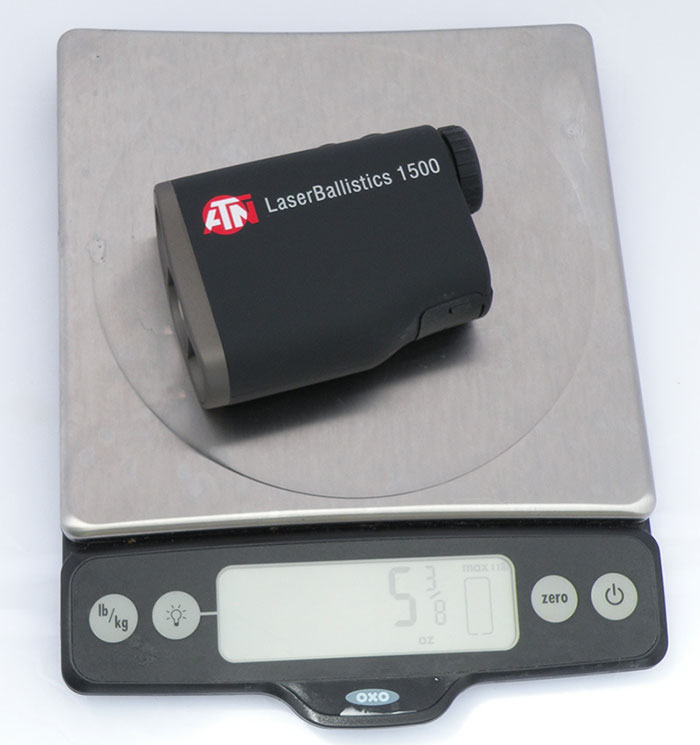
I was amazed but equally dumbfounded recently when I first saw the new LaserBallistics Rangefinder from ATN (American Technologies Network Corp), now available in 1,000- and 1,500-yard models.
This is a tiny piece of equipment that literally just fills my palm, yet it reads out to 1,500 yards (depending on the model). It defeats fog, smog, and other haze, shows the angle of declination between your target and the level, and Bluetooth interacts with the ATN Smart HD riflescopes or any smartphone or tablet.
Let me put some numbers on “tiny”: The LaserBallistics Rangefinder is 4 inches long x 2.75 inches wide x 1.37 inches thick by my measurements and weighs just five ounces on my digital kitchen scale, making it quite literally “pocket sized.” In the field, I carried the rangefinder by adjusting the provided neck strap and just dropping it into my left breast shirt pocket, and I forgot it was there, whether I was hiking or Jeepin’.
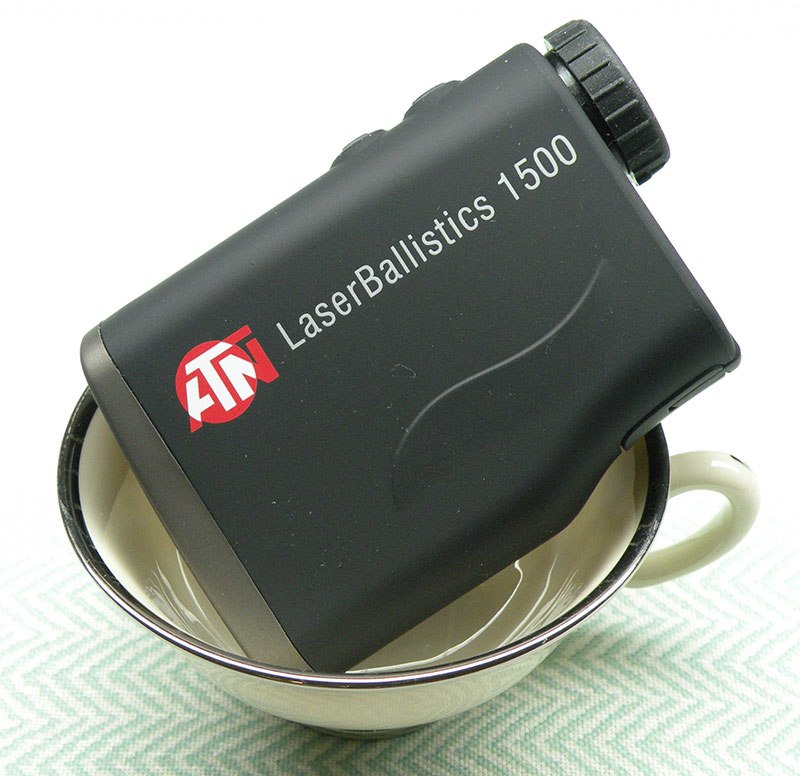
That’s about as small as it can get and be easily handled without being too small to be practical. I think the only reasonable next step is a corneal implant where you see and read the data in your head— à la The Terminator. The 6X optical magnification is just right for putting you on target, and the simple function display is self-explanatory.
Besides being small, light, and accurate, the ATN LaserBallistics Rangefinder has another feature that puts it over the moon when it comes to being a desirable asset for any shooter.
The rangefinder Bluetooth syncs with any ATN Smart HD riflescope, smartphone, or tablet and actually makes those elevation adjustments to the Smart HD scope or shows you the elevation sight adjustments needed to your conventional scope for the shot you are contemplating.
There are two schools of thought on windage corrections, and I personally prefer to simply estimate hold-off with my crosshair placement rather than twiddle with that dial. I find it too easy to forget to return the setting to zero or get myself confused as to how many clicks in which direction have been applied.
FIELD TESTING
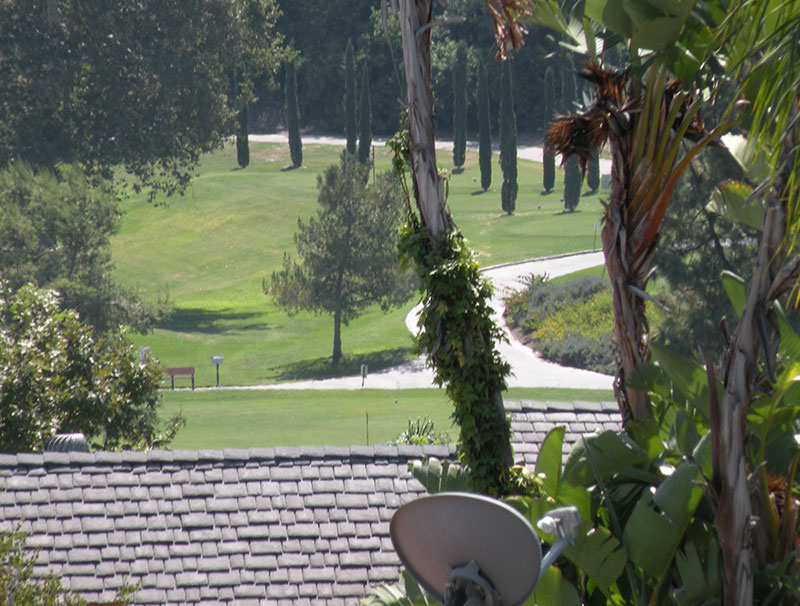
Field testing was in order for a thorough report, and step one of that was easy for me because I am fortunate to have quite a view from my backyard. I ranged stuff from the houses on the terraces below, to the golf course across the parkway at the bottom of the hill, to houses up and around the course and out to the 1,500-yard limit of the rangefinder.
I was afraid that being so small, it might be hard to hold steady on a target, especially at longer ranges, but that was not the case.
Using the rangefinder in this environment, with houses and window glass to bounce the laser signal, showed how valuable it would be in an urban application, whether that be street fighting or law enforcement.
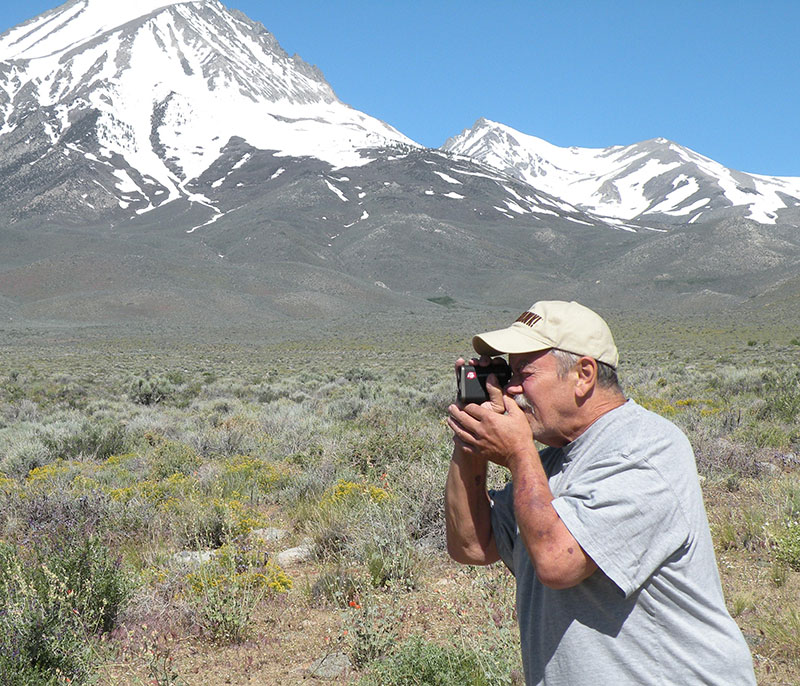
Playing around in the backyard was fun, but I wanted a real field experience, so I headed out to the upper Owens Valley in California’s Eastern Sierras.
Much like trying to estimate distance across water or from an airplane, the wide-open vistas of the stark high desert make a good guess just that—a guess—and accuracy is more luck than technique or experience. It’s the perfect venue for a rangefinder, and the ATN unit proved itself a worthy helper when distances are great and reference points for a laser bounce are small.
You get the best readings in this type of environment off a nice flat rock, but I found the ATN LaserBallistics Rangefinder would usually register and read from a good shear wall of a dirt bank. Wild burros roam the valley, and I was able to pull over and laser one from the driver’s seat just outside of Olancha, California on my drive home. He took off before I could dig my camera out of my kit bag, but his medium-gray hair made for a good reflective surface, even at 835 yards off the road.
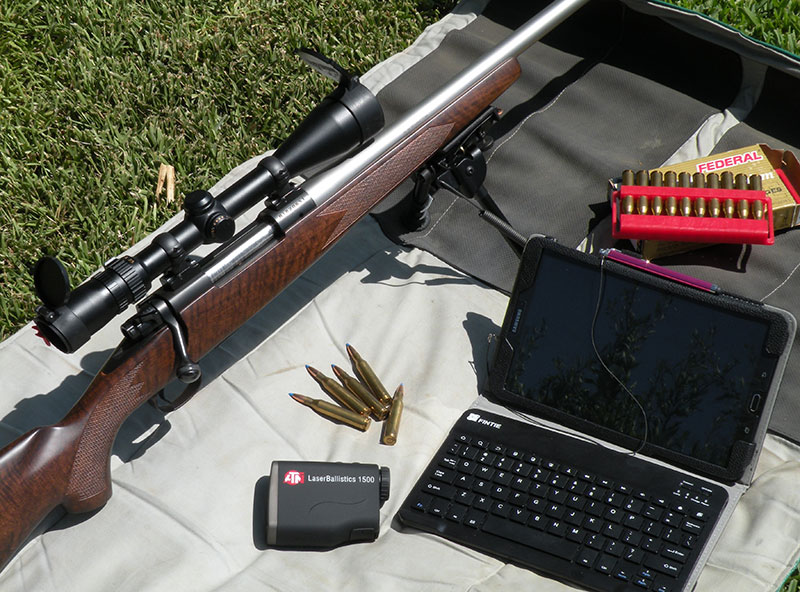
The only additional feature I can think of that would improve this rangefinder is night-vision capabilities, so I guess I’ll sit back and wait for that to be announced—if the corneal implant option doesn’t come first!
SOURCE
AMERICAN TECHNOLOGIES NETWORK CORPORATION
(800) 910-2862
www.atncorp.com


